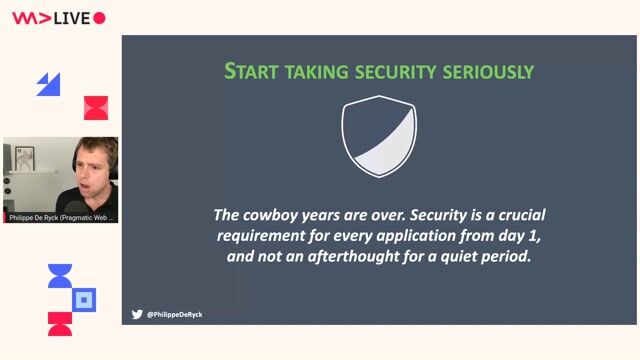Pratim Bhosale
Lessons learned from observing a billion API requests
#1about 3 minutes
Key findings from analyzing a billion API requests
Analysis of over a billion API requests reveals that JavaScript APIs are often less secure and half of all APIs lack any authentication.
#2about 3 minutes
Why opinionated frameworks lead to more secure APIs
Opinionated frameworks like Laravel and AdonisJS produce more secure APIs by providing built-in structure, ORMs, and authentication, unlike less structured JavaScript frameworks.
#3about 5 minutes
Understanding the four pillars of a high API score
A strong API score is based on four key pillars: consistent design, high performance, built-in security, and readiness for AI consumption.
#4about 4 minutes
Improving an API score with practical examples
A live demonstration shows how to improve an API's score by adding robust response codes and complete contact details to an OpenAPI specification.
#5about 4 minutes
Designing APIs for AI consumption and built-in security
Build better APIs for AI by using descriptive operation IDs and treat security as a core feature by masking PII and implementing rate limits internally.
#6about 3 minutes
Implement full traceability and use-case driven design
Improve API robustness by implementing full traceability to debug AI agent interactions and designing endpoints around user use cases rather than database schemas.
#7about 3 minutes
Recognizing your API is training data for AI models
Shift your mindset to understand that your API is now a primary data source for training AI models, making composable design and rich documentation essential.
Related jobs
Jobs that call for the skills explored in this talk.
Matching moments

14:33 MIN
A summary of APIs for multi-layered security
No More Post-its: Boost your login security with APIs

30:38 MIN
Key takeaways and further API design topics
API Design - Getting Started

03:41 MIN
Why learning about new APIs benefits developers
Explore new web features before everyone else

37:07 MIN
Q&A: Who designs web APIs and why use them over libraries
Web APIs you might not know about

15:59 MIN
Addressing security, performance, and scalability in JAMstack
Headless and JAMstack - The State of Commerce Today

24:53 MIN
Understanding the security risks of AI integrations
Three years of putting LLMs into Software - Lessons learned

40:46 MIN
Q&A on adopting new web APIs
Explore new web features before everyone else

05:08 MIN
The opaque and complex stack of modern LLM services
You are not my model anymore - understanding LLM model behavior
Featured Partners
Related Videos
 28:55
28:55Awful APIs: A History Lesson in Industry Mistakes and Mishaps
James Seconde
 47:34
47:34Architecting API Security
Philippe De Ryck
 25:46
25:46Bullet-Proof APIs: The OWASP API Security Top Ten
Christian Wenz
 20:29
20:29REST in Peace? What does the API protocol of the future look like? Or do we have it already?
Simon Auer
 27:25
27:25API = Some REST and HTTP, right? RIGHT?!
Rustam Mehmandarov
 29:30
29:30Lessons from Our API Past: Evolving to a Resilient API Future
Yousaf Nabi
 44:15
44:15API Design - Getting Started
Alen Pokos
 32:28
32:28Building APIs in the AI Era
Hugo Guerrero
From learning to earning
Jobs that call for the skills explored in this talk.
![Senior Software Engineer [TypeScript] (Prisma Postgres)](https://wearedevelopers.imgix.net/company/283ba9dbbab3649de02b9b49e6284fd9/cover/oKWz2s90Z218LE8pFthP.png?w=400&ar=3.55&fit=crop&crop=entropy&auto=compress,format)
Senior Software Engineer [TypeScript] (Prisma Postgres)
Prisma
Remote
Senior
Node.js
TypeScript
PostgreSQL

Senior PHP Developer (NL based only)
Online Payment Platform
Delft, Netherlands
€75-95K
Senior
PHP
MySQL
Laravel

Senior Systems/DevOps Developer (f/m/d)
Bonial International GmbH
Berlin, Germany
Senior
Python
Terraform
Kubernetes
Elasticsearch
Amazon Web Services (AWS)


Frontend Developer (Angular)
Picnic Technologies B.V.
Amsterdam, Netherlands
Intermediate
Senior
CSS
RxJS
JavaScript



